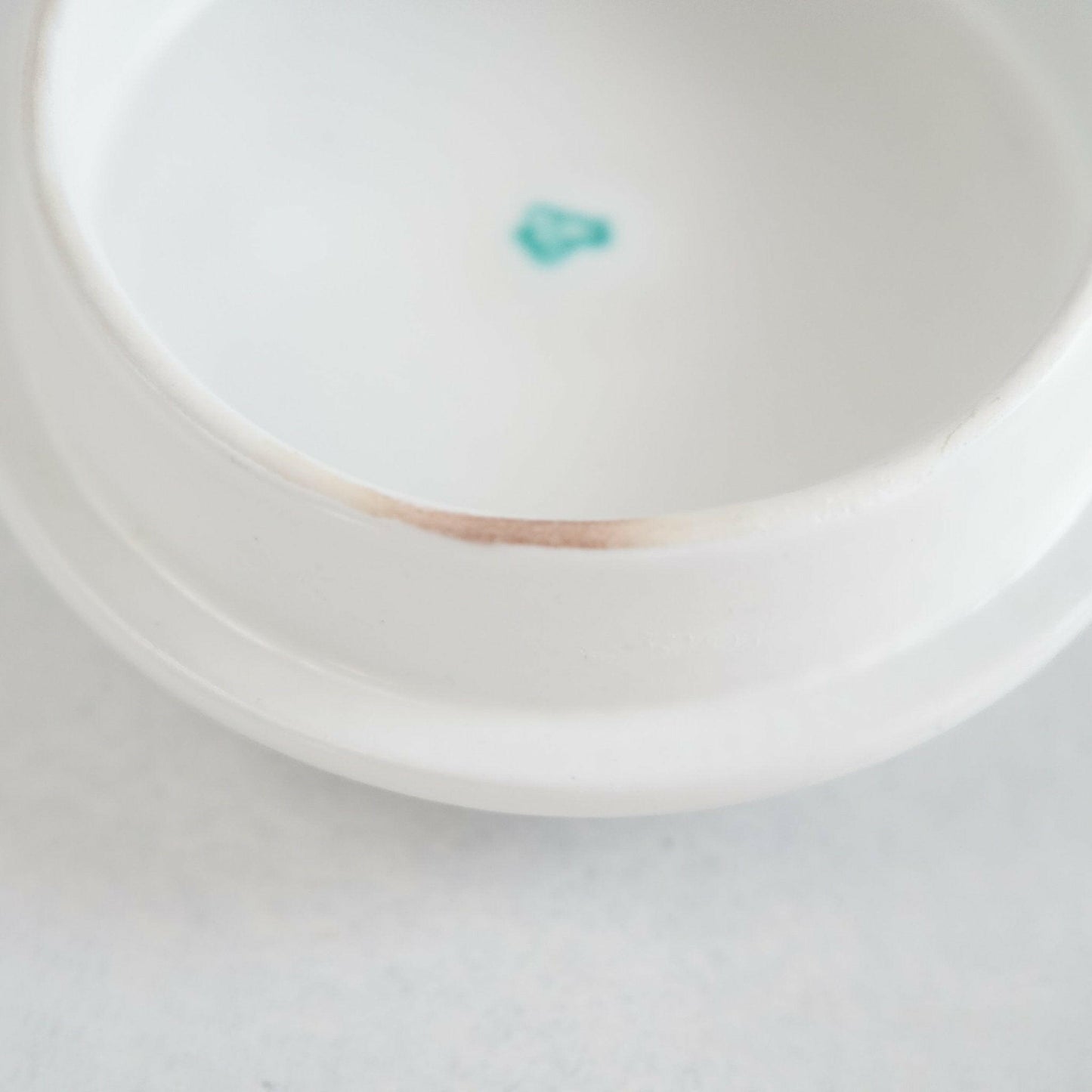Gustavsberg
Gustavsberg Stig Lindberg G Studio faience double teapot
Gustavsberg Stig Lindberg G Studio faience double teapot
Couldn't load pickup availability
This teapot was hand-painted in the 1950s in the workshop of Gustavsberg's leading designer, Stig Lindberg. In addition to the mass-produced products, Gustavsberg had a department called G-Studion where famous designers such as Stig Lindberg and Lisa Larson produced art pieces. This pot was made in that atelier. Lindberg's signature can be seen on the bottom of the pot . It was made using a technique called faience, which was used in ancient Egypt.
Faience is a method of firing pottery made from red clay, which is then dried and dipped in a white glaze called tin glaze. This technique was invented in ancient Egypt and is the oldest method of pottery making using glazes in the world.
Currently, Gustavsberg mainly produces hard white porcelain (bone china), but half a century ago, they also produced a lot of faience, which can be produced at low kiln temperatures. Due to its characteristics, faience is more fragile than regular pottery, and it is rare for a complete piece to remain.
The base of the teapot bears a handwritten "G," indicating that it was made in Gustavsberg's G-Studion studio. The marks on the base and inside the lid are the signatures of the artist, Goffredo Nannini. The "F/79" on the base designates the pattern design, and the "100" is a number that identifies the shape of the teapot.
■Details Manufacturer: Gustavsberg / Gustavsberg Form Design: Stig Lindberg / Stig Lindberg Pattern Design: Gofredo Nannini / Goffredo Nannini Era: 1950s Country of origin: Sweden Condition: ★★★★★ (5: Complete)
This deadstock item is in excellent condition with no cracks, chips, or crazing, and no signs of wear due to use. It is in perfect condition, retaining the appearance it had when it was manufactured.
■Size: Height 23cm (10cm + 13cm) Width 19cm (including spout)
■Capacity
850ml (350ml + 500ml)
Weight
1120g (490g + 630g)































Stig Lindberg

Stig Lindberg (1916-1982)
Born in Umeå, the central city of northern Sweden. Originally from Stockholm's art school Konstfack ( Learn painting at Konstfack. He joined Gustavsberg in 1937 and gradually rose to prominence under the tutelage of his mentor, Wilhelm Koge. Twelve years later, in 1949, he succeeded Koge as the company's art director in charge of design.
Since then, Lindberg has released numerous works as a standard bearer of Swedish modernism in the mid-20th century. During Lindberg's time, the Gustavsberg workshop was at its peak, and its works from that time are recognized as works from the golden period known as ``mid-century,'' and are highly valued. Lindberg's studio is called G-Studion, where young designers are demonstrating their skills and producing famous artists such as Lisa Larson.
Gustavsberg's G-Studion

Apart from the mass production line, Gustavsberg had a department called G-Studion. Famous designers such as Willhelm Koge, Stig Lindberg and Lisa Larsson created their artwork here.
Founded in 1942, G Studio was a group of artists, designers, craftsmen and illustrators whose activities ranged from creative work to exhibition ceramics, public space art production and industrial design. . It operated until 1993 and served as an ``aesthetic laboratory''. It was also responsible for providing design ideas for Gustavsberg's mass-produced products.
G-Studio was a renovated atelier in an old building from a ceramics factory in Gustavsberg, and was a hub for more than 100 artists and craftsmen. It is no exaggeration to say that Gustavsberg's ceramic tradition of the 20th century originated from here. It was a centerpiece of the Swedish art and design world and served as a breeding ground for new creativity.
Each piece of G Studio's work is handmade, and there are videos showing the production process. The video shows a man wearing round glasses, designer Stig Lindberg. And on the right side you can see Willhelm Koge, who was the studio director.
Collapsible content
Accepted payment methods
- Various credit cards
- Apple pay, Google Pay, Paypal
- Convenience store settlement
- Bank transfer
- Smartphone payment (QR code payment)
Arrive the day after shipping
Our shipping location is Shiga Prefecture. Domestic areas, excluding Hokkaido, Okinawa Prefecture, remote islands, and parts of Tohoku, will arrive the day after the shipping notification (except in the case of bad weather, etc.).
vintage rating
See below for more information on rating conditions using stars.
About the size of the product
Product photos are close-ups so that you can see the condition well. Therefore, the actual product may appear smaller. The wooden spoon is for size comparison, not an accessory, and is 13 cm long.
about shipping cost
The shipping fee is a flat rate of 900 yen ( free shipping for purchases over 10,000 yen ).
*Shipping fee for Hokkaido and Okinawa is 1,400 yen (free shipping for purchases over 13,000 yen).
International Shipping
We are offering international shipping to over 100 locations. Enjoy free shipping when you spend 200,000 JPY or more.



































